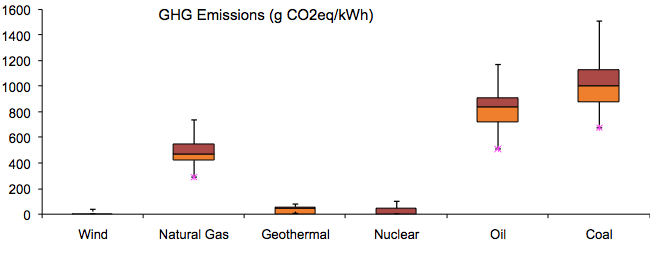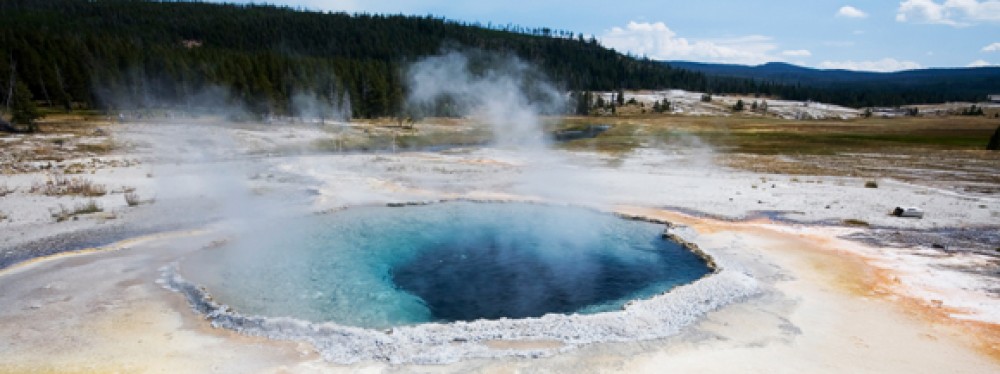Compared to other energy sources, such as natural gas, coal, and some renewables, geothermal energy is one of the cleanest forms of energy used for electricity generation available today. Geothermal energy can be captured with 3 main different processes, all of which produce very little or zero greenhouse gas emissions.
The greenhouse gases that are emitted from geothermal power plants (as well as all other types of power plants), are carbon dioxide, methane, particulate matter, nitrous oxides, and hydrogen sulfide. Carbon Dioxide is the most commonly released greenhouse gas from geothermal power plants. Methane is another common greenhouse gas emitted from geothermal systems, but those emissions are natural emissions, and they are minimal. Methane emissions from geothermal plants are actually several orders of magnitude smaller than coal and natural gas methane emissions. As far as particulate matter and nitrous oxides, geothermal power plants emit such small amounts of these that they are negligible compared to other sources of energy. Hydrogen sulfide is the pollutant of greatest concern for geothermal power plants. One way geothermal power plants avoid this problem is by installing Hydrogen Sulfide Abatement Systems, which can remove up to 99.9 percent of the hydrogen sulfide that would be released into the atmosphere. It is estimated that geothermal dry-steam power plants produce only 0.0002 lbs/MWh of hydrogen sulfide and about 0.35 lbs/MWh for flash power plants.
According to Holm et. al, flash and dry-steam plants emit around 5 percent of the carbon dioxide, 1 percent of the sulfur dioxide, and less than 1 percent of the nitrous oxide that is emitted by a coal-fired plant of equal energy capacity.
Argonne National Laboratories conducted a study which concluded that binary power plants have some of the lowest emissions of any electricity generating technology. In their 2010 life-cycle analysis of geothermal systems, they calculated that the greenhouse gas emissions from binary power plants is approximately 5.7 gCO2eq/kWh. This value is lower than that of wind and solar power. Wind electricity production has estimated greenhouse gas emissions of 8.0 gCO2eq/kWh, and solar has 62.3 gCO2eq/kWh.
The IPCC released a report in 2011 on renewable energy sources and climate change mitigation, in which they reviewed the greenhouse gas emissions of various electricity generation technologies. Their results can be seen below.

Life Cycle Analyses of Greenhouse Gas Emissions from Electricity Generation Technologies (g CO2eq/kWh)

Life Cycle Analyses of Greenhouse Gas Emissions from Electricity Generation Technologies (g CO2eq/kWh)
As can be seen in the above table and figure, using geothermal energy as a source of electricity generation becomes extremely competitive when it comes to air pollutants released.
Primary Author: Jessica Ross
Edited by: Kyle Brennan
Sources
Moomaw, W., P. Burgherr, G. Heath, M. Lenzen, J. Nyboer, A. Verbruggen, 2011 (2011): Annex II: Methodology, IPCC Special Report on Renewable Energy Sources and Climate Change Mitigation

